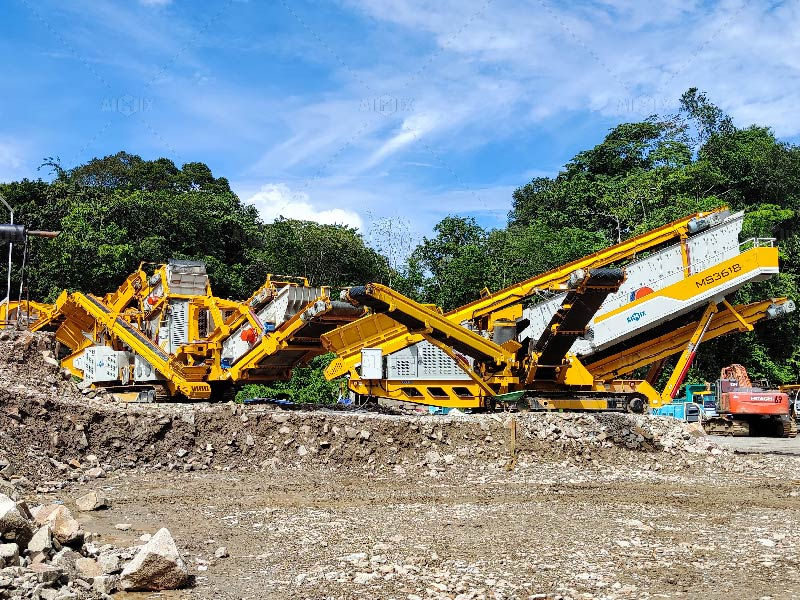How Does the Moisture Content of the Stone Affect the Operation of the Crusher Plant?
- info515452
- 3月27日
- 讀畢需時 3 分鐘
Moisture content is a crucial factor in the efficiency and performance of a stone crusher plant. High moisture levels in the raw material can lead to operational challenges such as material sticking, reduced throughput, and increased wear on components. Understanding how moisture impacts different stages of crushing can help operators optimize processes and prevent costly downtime.
What Is the Moisture Content of Stone?
The moisture content of stone refers to the amount of water present in the raw material, typically expressed as a percentage of the stone’s total weight. Moisture levels vary based on factors such as:
Geological origin: Some stones, like limestone, tend to absorb more moisture than harder materials like granite.
Weather conditions: Stones exposed to rain, snow, or humidity will have higher moisture content.
Storage and handling: If aggregates are stored in open areas without proper drainage, water can accumulate and increase moisture levels.
Understanding moisture content is essential for processing efficiency, as too much water can cause material to become sticky and difficult to handle, while overly dry material may generate excessive dust, these will all affect your choice of equipment in your stone crushing plant(planta de trituracion de piedra).

The Impact of Moisture on Crusher Performance
Moisture affects both the feeding process and the actual crushing operation. When water content is too high, material can become sticky, causing blockages and reducing efficiency. Conversely, excessively dry material may generate dust, which can affect worker safety and equipment longevity.
1. Material Blockage in the Feeding System
The feeding stage is the first area affected by high moisture content. Wet material tends to clump together, leading to:
Chute and hopper blockages: Excessive moisture causes fine particles to stick to surfaces, creating buildup that disrupts material flow.
Irregular feeding: Sticky materials may not move evenly, leading to inconsistent feed rates and uneven crusher loads.
To address these issues, an aggregate crusher plant(planta trituradora de agregados) should incorporate vibration mechanisms or pre-screening systems to help separate wet fines before crushing.
2. Effects on Primary Crushing Equipment
Primary crushers, such as jaw crushers for sale, are designed to handle various types of stone. However, excessive moisture can:
Reduce crushing efficiency: Sticky material adheres to the jaw plates, affecting the crushing motion.
Increase wear on components: Continuous exposure to wet material accelerates wear on liners and jaw plates.
Cause operational slowdowns: Frequent cleaning and manual intervention may be required to maintain consistent performance.
For operations dealing with high-moisture materials, using a jaw crusher for sale with an adjustable feed opening and anti-clogging features can help improve efficiency.
3. Challenges in Secondary and Tertiary Crushing
After primary crushing, material moves to secondary and tertiary crushers, such as cone crushers or impact crushers. Moisture-related issues in this stage include:
Reduced screening efficiency: Wet material can clog screen meshes, decreasing the effectiveness of size separation.
Mud buildup on conveyor belts: Excess moisture leads to sticky residues on conveyors, requiring frequent cleaning.
Lower throughput: Waterlogged material moves slower through the crushing system, reducing overall productivity.
To mitigate these effects, an aggregate crusher plant should implement high-frequency vibrating screens and properly sealed conveyor systems.
4. Impact on Dust Generation and Environmental Control
While high moisture content can cause blockages, excessively dry material presents another challenge—dust generation. Excessive dust can:
Increase health hazards for workers.
Accelerate wear on machinery, especially bearings and filters.
Violate environmental regulations, leading to fines and operational restrictions.
Using moisture control systems, such as controlled water spraying, can help balance moisture levels and minimize dust-related issues.
5. Best Practices for Managing Moisture in a Stone Crusher Plant
To ensure smooth operation despite moisture variations, consider the following strategies:
Pre-screening materials to remove excess fines before crushing.
Installing proper drainage systems to prevent water accumulation in material stockpiles.
Using covered storage areas to keep raw materials dry.
Optimizing crusher selection, such as choosing a jaw crusher for sale(trituradora de quijada en venta) with a wider feed opening to handle wet material more effectively.
Implementing moisture sensors to monitor stone conditions in real time and adjust processes accordingly.
Conclusion
The moisture content of the stone significantly influences the efficiency and reliability of a stone crusher plant. High moisture levels can cause blockages, reduce crushing efficiency, and increase equipment wear, while dry conditions contribute to excessive dust. By implementing effective moisture management strategies, such as pre-screening, improved storage, and proper equipment selection, operators can enhance the performance of their aggregate crusher plant and minimize operational disruptions.






留言